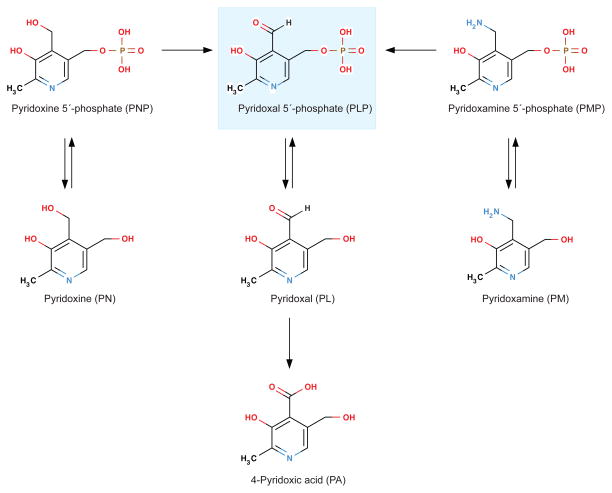Figure 1.
The kynurenine pathway of tryptophan catabolism and enzymes and cofactors involved. The heme dioxygenases, hepatic tryptophan (2,3)-dioxygenase (TDO; EC 1.13.1.2.) and ubiquitous indoleamine (2,3)-dioxygenase (IDO; EC 1.13.11.42), catalyze the oxidation of L-tryptophan to N-formylkynurenine, which is the first and rate limiting step of tryptophan catabolism. IDO is activated by pro-inflammatory cytokines like INF-gamma and TNF-alfa (100, 106) . N-Formylkynurenine is rapidly converted by formamidase (not shown) to kynurenine (Kyn). Kyn is converted to 3-hydroxykynurenine (HK) by FAD-dependent kynurenine mono-oxygenase (KMO; EC 1.14.13.9), and then cleaved to 3-hydroxyanthranilic acid (HAA) by the PLP-dependent enzyme, kynureninase (KYNU; EC 3.7.1.3), which also catalyzes the conversion of Kyn to anthranilic acid (AA). The PLP dependent enzyme kynurenine transaminase (KAT) catalyzes the formation of two end-stage metabolites, kynurenic acid (KA, from Kyn) and xanthurenic acid (XA, from HK).

